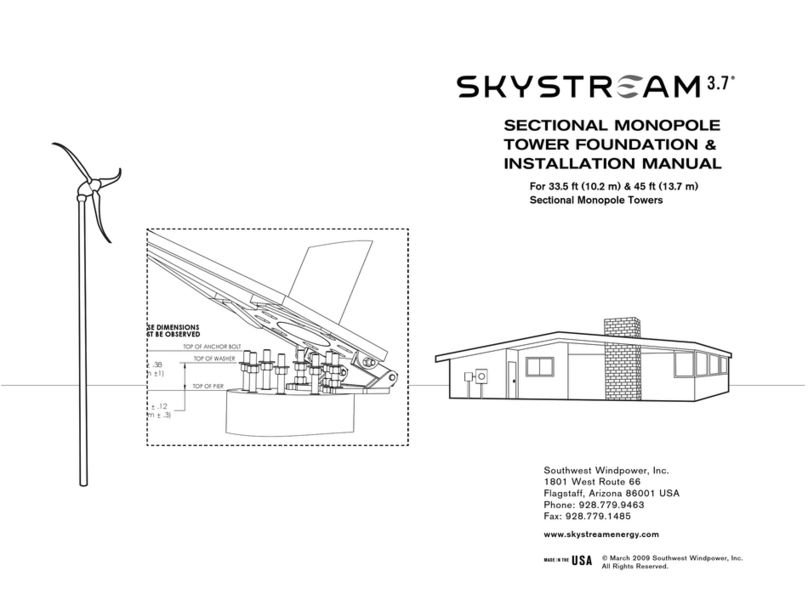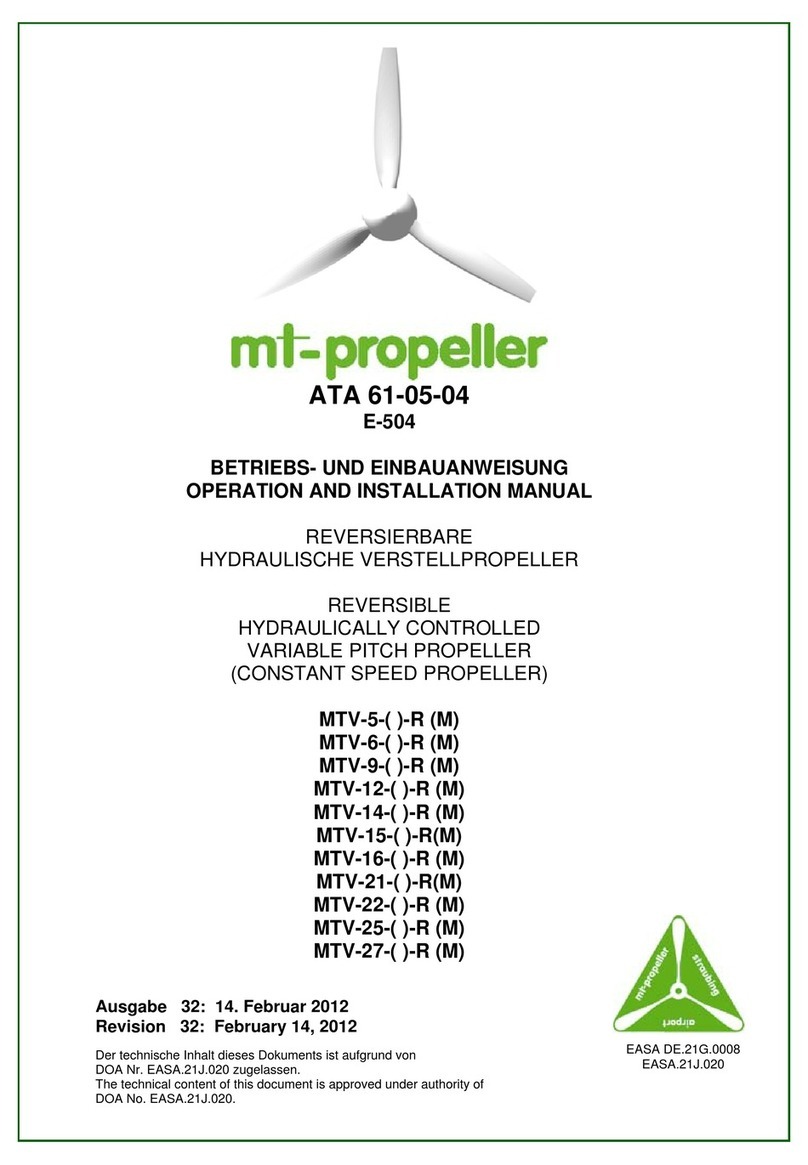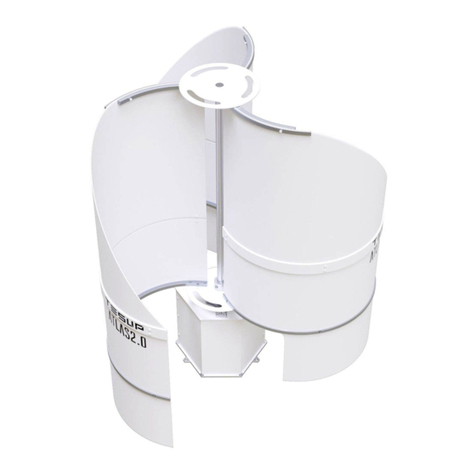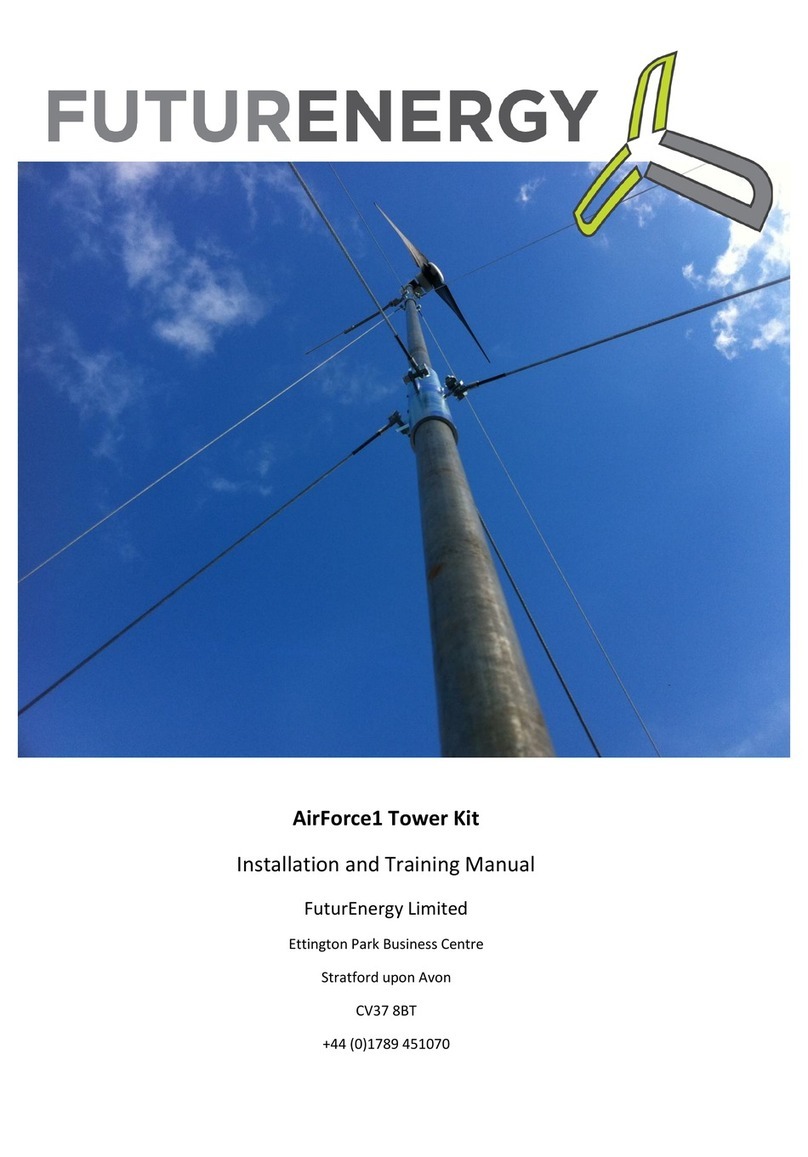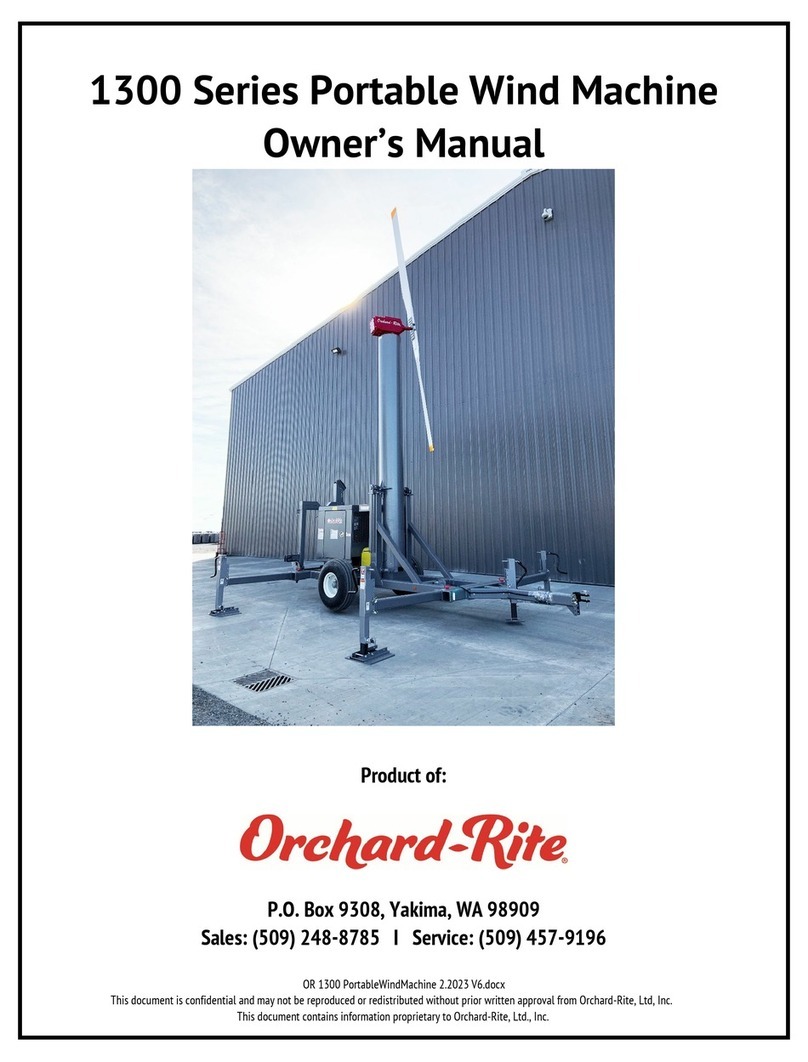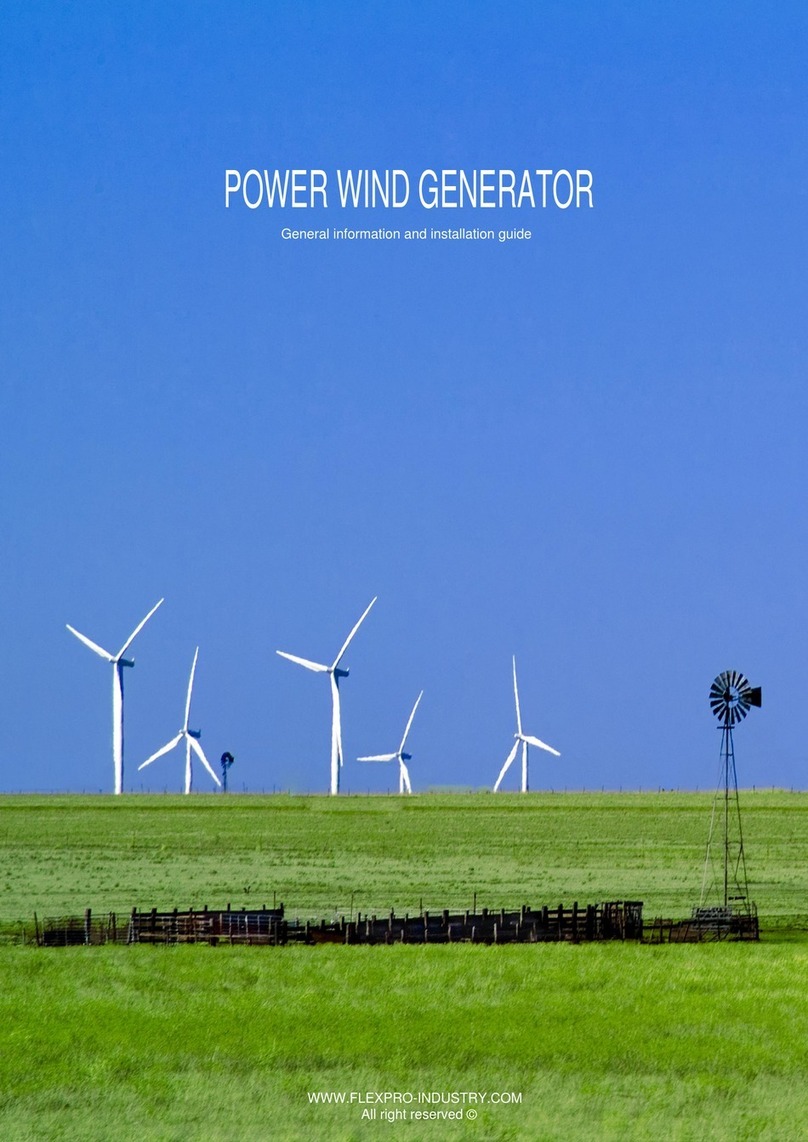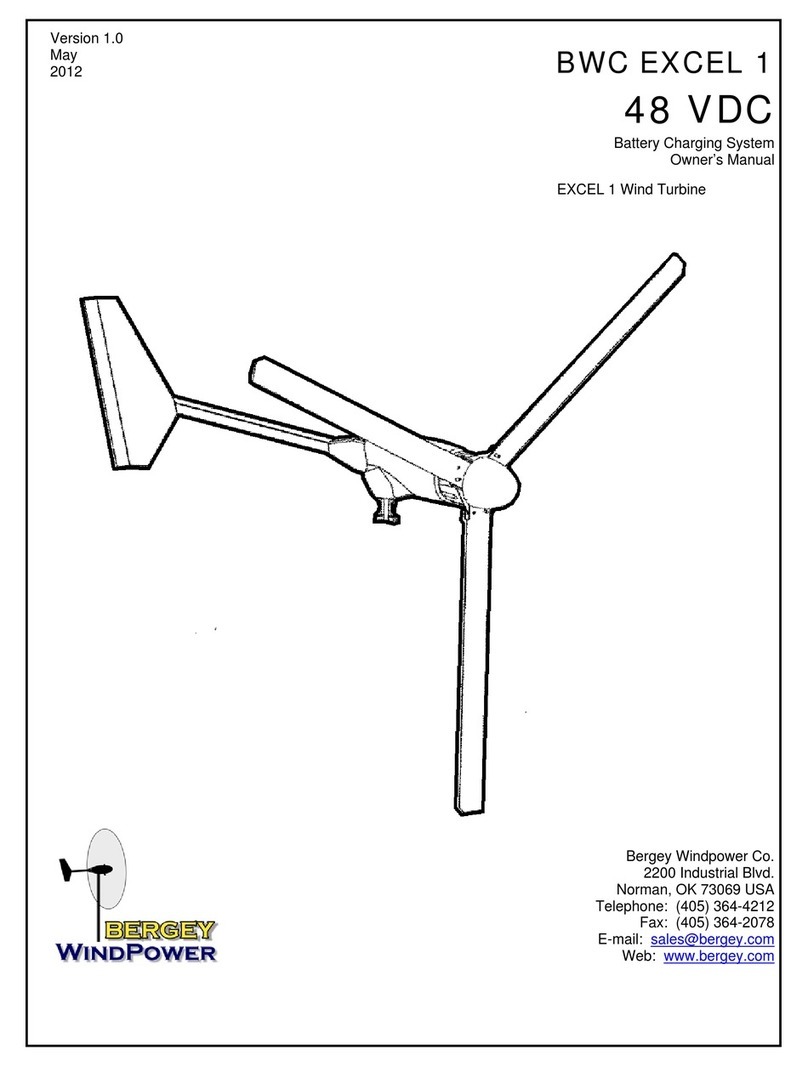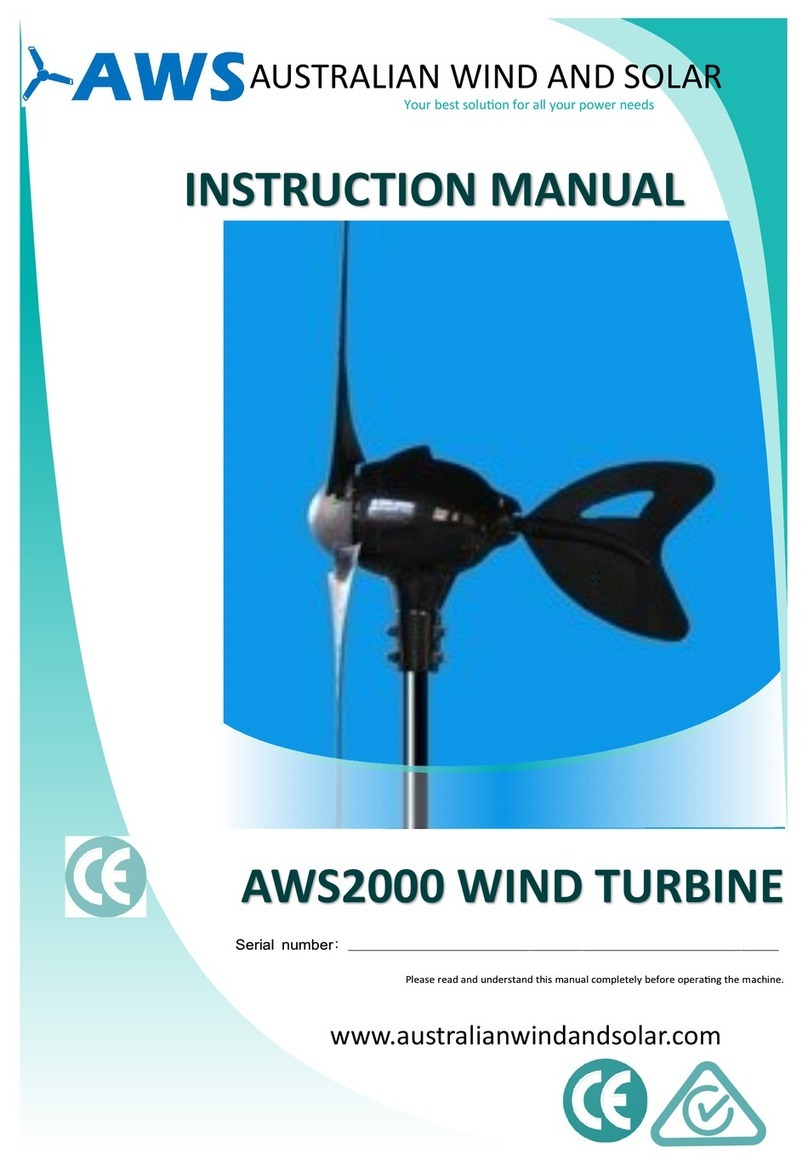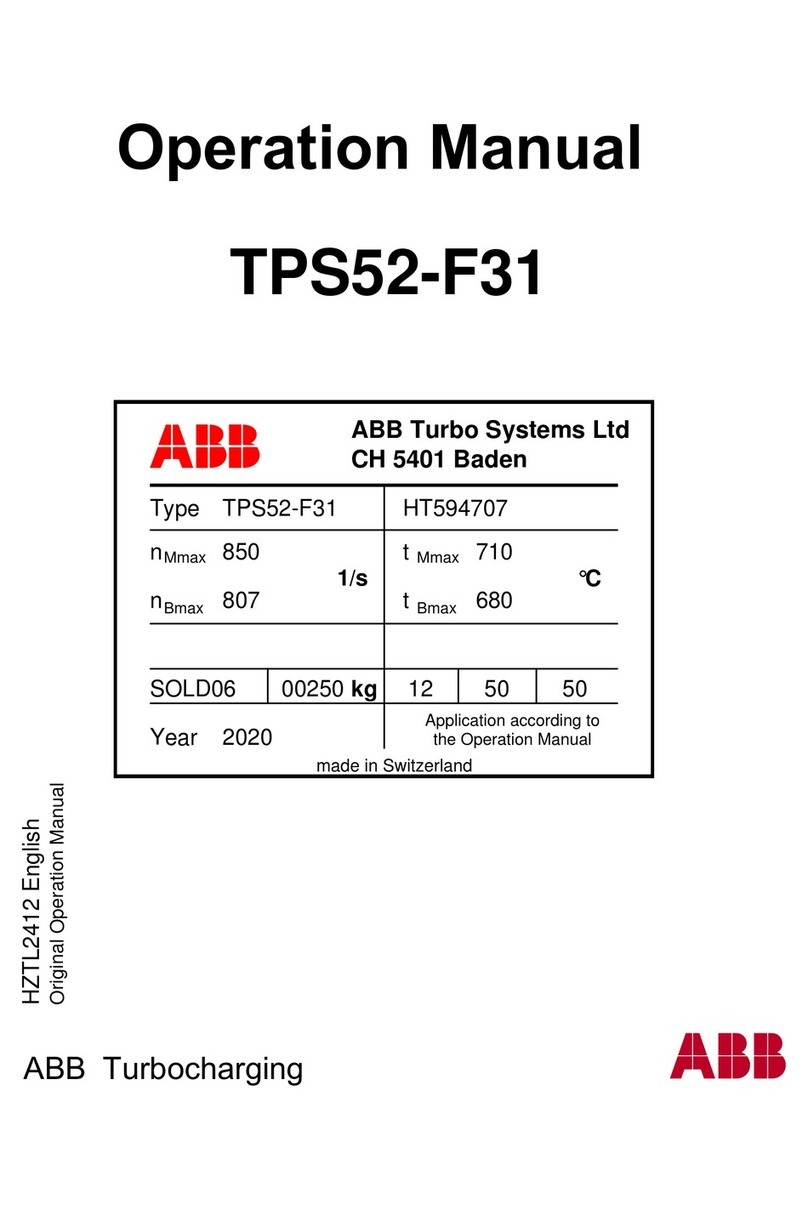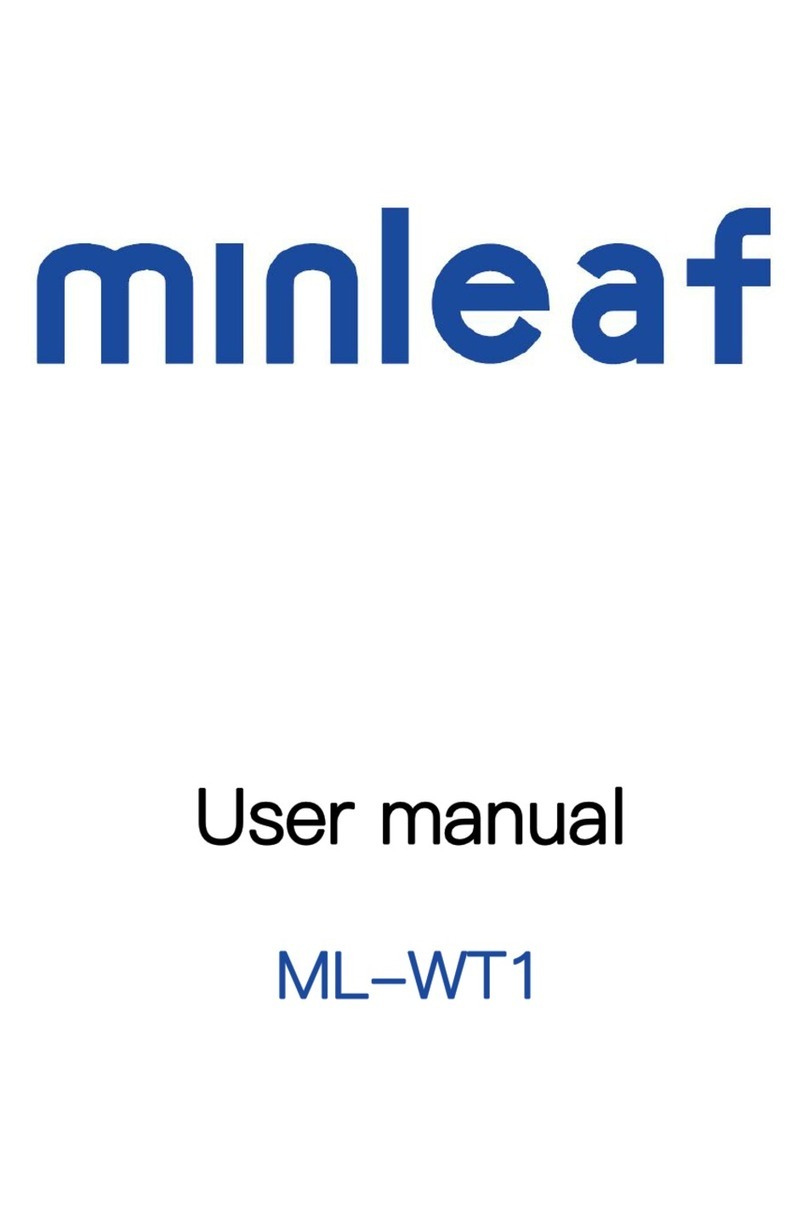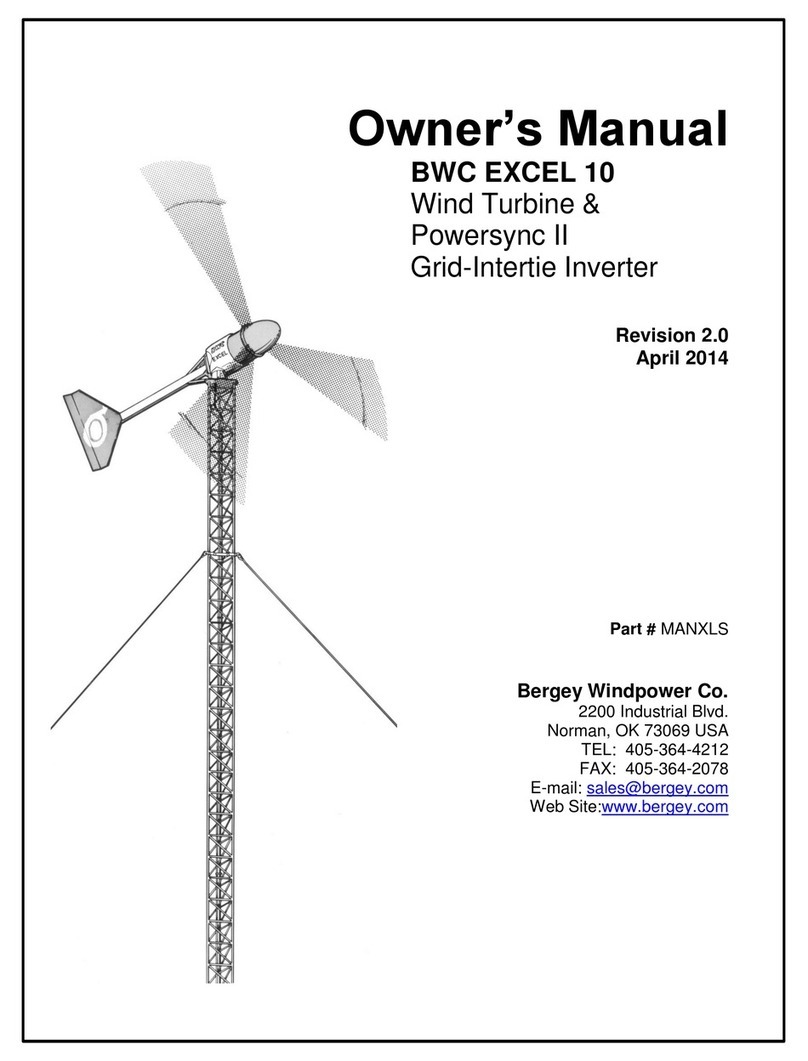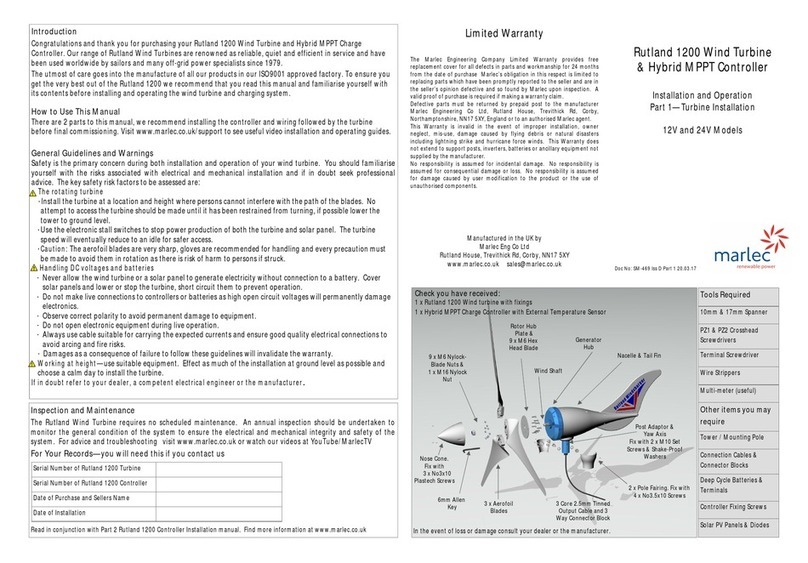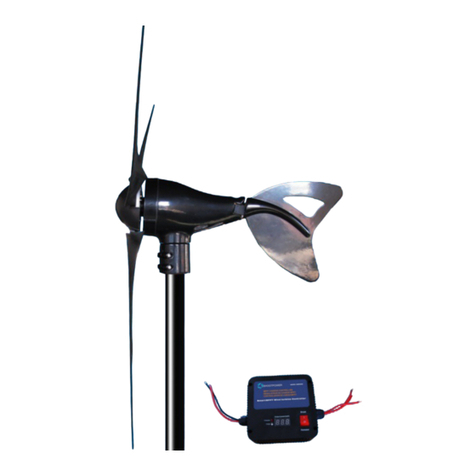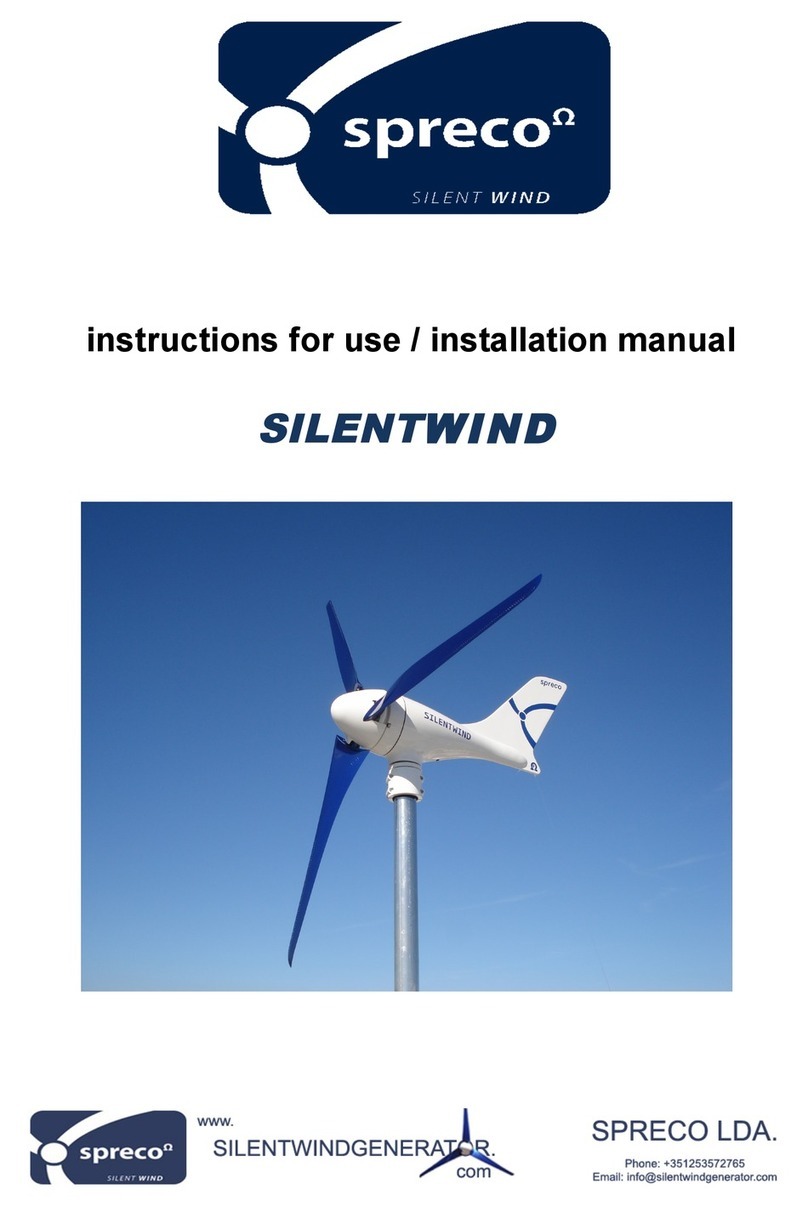6 Air Breeze Owner’s Manual
Hardware Warranty
Southwest Windpower, Inc., (“Southwest Windpower”) will repair or replace free of
charge any part or parts of the Southwest Windpower Air Breeze (Land or Marine) Wind
Turbine determined by Southwest Windpower to be defective in materials and/or work-
manship under normal authorized use consistent with product instructions for a period of
three years from the date the original purchaser (“Customer”) receives the Wind Turbine
(“Start Date”). This warranty extends only to the original purchaser. The Customer’s sole
and exclusive remedy and the entire liability of Southwest Windpower, its suppliers and
affiliates under the warranty is, at Southwest Windpower’s option, either (i) to replace
the Wind Turbine with new or reconditioned Wind Turbine; (ii) to correct the reported
problem; or (iii) to refund the purchase price of the Wind Turbine. Repaired or replaced
products are warranted for the remainder of the original warranty period.
Restrictions
Problems with the Wind Turbine Products can be due to improper use, improper main-
tenance, non-Southwest Windpower additions or modifications or other problems not
due to defects in Southwest Windpower’s workmanship or materials. No warranty will
apply if the Wind Turbine (i) has been altered or modified except by Southwest Wind-
power; (ii) has not been installed, operated, repaired, or maintained in accordance with
instructions supplied by Southwest Windpower; (iii) or (iv) has been exposed to winds
exceeding 120 mph (54 m/s), or has been subjected to abnormal physical, thermal
or electrical stress, misuse, negligence, or accident. If Southwest Windpower’s repair
facility determines that the problem with the Wind Turbine is not due to a defect in
Southwest Windpower’s workmanship or materials, then the party requesting warranty
service will be responsible for the costs of all necessary repairs and expenses incurred
by Southwest Windpower.
Warranty Claims & Return Procedures
In order to be eligible for service under this warranty, the Customer must submit a
service request for Wind Turbine covered by this warranty within the warranty period by
contacting Southwest Windpower in writing or via telephone and obtaining a Return
Authorization (“RA”) number. This RA must be obtained before returning any product
under this warranty.
Notification must include a description of the alleged defect, the manner in which the
Wind Turbine was used, the serial number, and the original purchase date in addition
to the name, address, and telephone number of the party requesting warranty service.
Within 3 business days of the date of notification, Southwest Windpower will provide
the Customer with an RA number and the location to which the Customer must return
the defective Wind Turbine. Any Wind Turbine requiring warranty shall be transported
at the expense and risk of the party requiring warranty service, including but not limited
to proper packaging of the Product. The Customer must return the entire Wind Turbine
kit within 30 days after issuance of the RA number. Southwest Windpower will be
under no obligation to accept any returned Wind Turbine that does not have a valid RA
number. Customer’s failure to return the Wind Turbine within 30 days of its receipt of
an RA number may result in cancellation of the RA. All parts that Southwest Wind-
power replaces shall become Southwest Windpower’s property on the date Southwest
Windpower ships the repaired Wind Turbine or part back to the Customer. Southwest
Windpower will use all reasonable efforts within five days of receipt of the defective
Wind Turbine to repair or replace such Wind Turbine. If a warranty claim is invalid for
any reason, the Customer will be charged at Southwest Windpower’s then-current
rates for services performed and will be charged for all necessary repairs and expense
incurred by Southwest Windpower.
Disclaimer
EXCEPT FOR THE EXPRESSED WARRANTY SET FORTH ABOVE, SOUTHWEST
WINDPOWER DISCLAIMS ALL OTHER EXPRESSED AND IMPLIED WARRAN-
TIES, INCLUDING THE IMPLIED WARRANTIES OR FITNESS FOR A PARTICULAR
PURPOSE, MERCHANTABILITY AND NON-INFRINGEMENT. NO OTHER WAR-
RANTY, EXPRESSED OR IMPLIED, WHETHER OR NOT SIMILAR IN NATURE TO
ANY OTHER WARRANTY PROVIDED HEREIN, SHALL EXIST WITH RESPECT TO
THE PRODUCT SOLD UNDER THE PROVISIONS OF THESE TERMS AND CON-
DITIONS. SOUTHWEST WINDPOWER EXPRESSLY DISCLAIMS ALL LIABILITY
FOR BODILY INJURIES OR DEATH THAT MAY OCCUR, DIRECTLY OR INDIRECT-
LY, BY USE OF THE PRODUCT BY ANY PERSON. ALL OTHER WARRANTIES ARE
EXPRESSLY WAIVED BY THE CUSTOMER.
Limitation of Liability
UNDER NO CIRCUMSTANCES WILL SOUTHWEST WINDPOWER OR ITS AFFIL-
IATES OR SUPPLIERS BE LIABLE OR RESPONSIBLE FOR ANY LOSS OF USE,
INTERRUPTION OF BUSINESS, LOST PROFITS, LOST DATA, OR INDIRECT, SPE-
CIAL, INCIDENTAL, OR CONSEQUENTIAL DAMAGES OF ANY KIND REGARD-
LESS OF THE FORM OF ACTION, WHETHER IN CONTRACT, TORT (INCLUDING
NEGLIGENCE), STRICT LIABILITY OR OTHERWISE, RESULTING FROM THE DE-
FECT, REPAIR, REPLACEMENT, SHIPMENT OR OTHERWISE, EVEN IF SOUTH-
WEST WINDPOWER OR ITS AFFILIATE OR SUPPLIER HAS BEEN ADVISED
OF THE POSSIBILITY OF SUCH DAMAGE. (Note: some states and provinces
do not allow the exclusion or limitation of incidental or consequential damages, so
these limitations may not apply to you.) Neither Southwest Windpower nor its affiliates
or suppliers will be held liable or responsible for any damage or loss to any items or
products connected to, powered by or otherwise attached to the hardware. The total
cumulative liability to Customer, from all causes of action and all theories of liability, will
be limited to and will not exceed the purchase price of the Product paid by Customer.
This warranty gives the Customer specific legal rights and the Customer may also have
other legal rights that vary from state to state or province to province.
Air Breeze 3-Year Limited Warranty
3-CMLT-1331 REV NC 10-07
WIND TURBINE WARRANTY AGREEMENT
